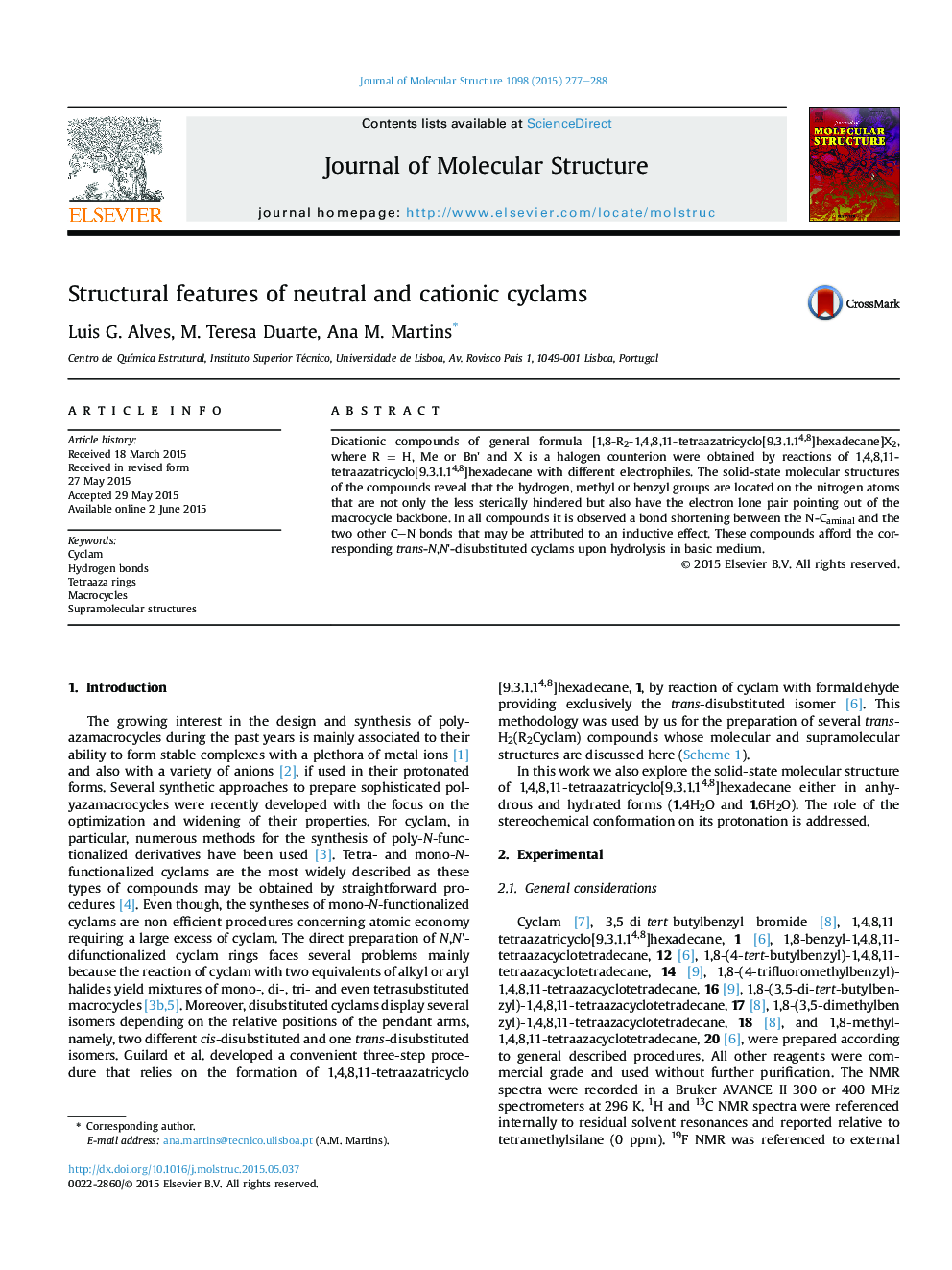| Article ID | Journal | Published Year | Pages | File Type |
|---|---|---|---|---|
| 1409217 | Journal of Molecular Structure | 2015 | 12 Pages |
•Neutral and dicationic cyclams are described.•The supramolecular structures depend on the substituents of the macrocycle.•Intermolecular hydrogen bonds determine supramolecular architectures.•C–H⋯F interactions are preponderant on the overall packings.
Dicationic compounds of general formula [1,8-R2-1,4,8,11-tetraazatricyclo[9.3.1.14,8]hexadecane]X2, where R = H, Me or Bn' and X is a halogen counterion were obtained by reactions of 1,4,8,11-tetraazatricyclo[9.3.1.14,8]hexadecane with different electrophiles. The solid-state molecular structures of the compounds reveal that the hydrogen, methyl or benzyl groups are located on the nitrogen atoms that are not only the less sterically hindered but also have the electron lone pair pointing out of the macrocycle backbone. In all compounds it is observed a bond shortening between the N-Caminal and the two other C–N bonds that may be attributed to an inductive effect. These compounds afford the corresponding trans-N,N'-disubstituted cyclams upon hydrolysis in basic medium.
Graphical abstractDicationic compounds of general formula [1,8-R2-1,4,8,11-tetraazatricyclo[9.3.1.14,8]hexadecane]X2, where R = H, Me or Bn’ and X is an halogen counterion are described. Neutral compounds, prepared by basic hydrolysis of the salts are also reported. The solid-state molecular structures of selected neutral and cationic compounds are discussed. The view along the b-axis of the supramolecular structure of 1,8-dimethyl-4,11-diazoniatricyclo[9.3.1.14,8]hexadecane-1,8-diium diiodide, 11, is shown below.Figure optionsDownload full-size imageDownload as PowerPoint slide
